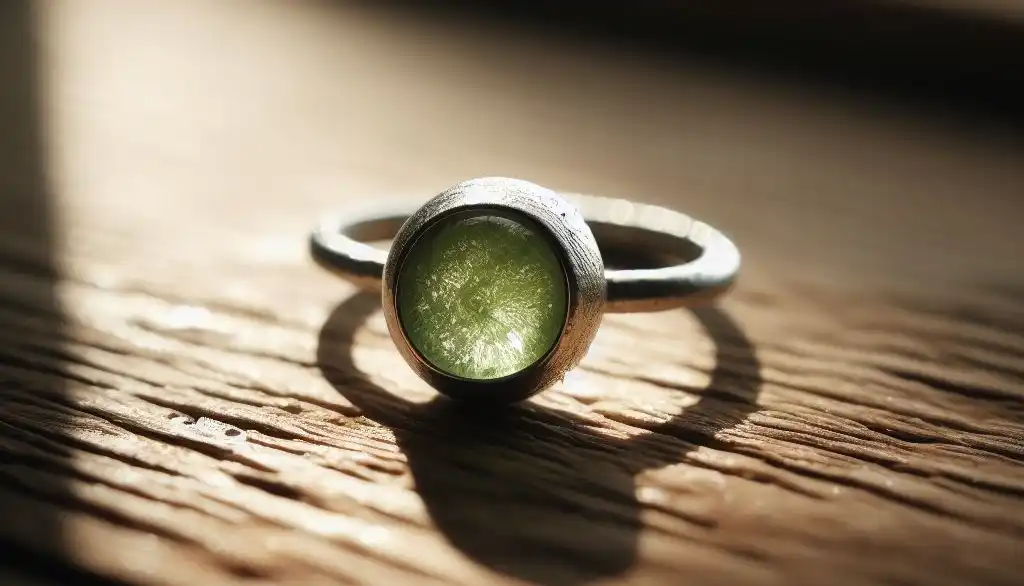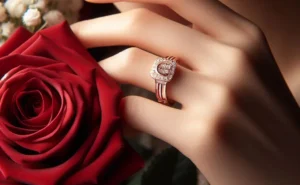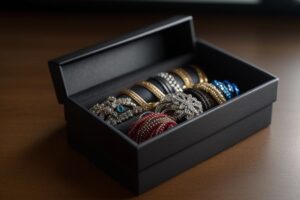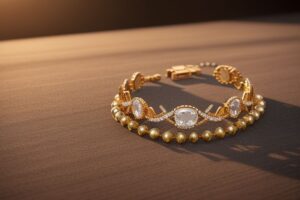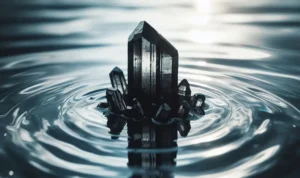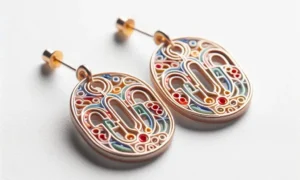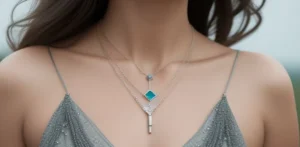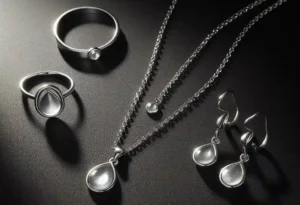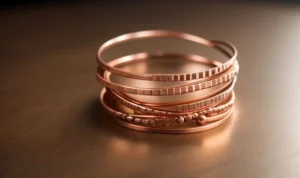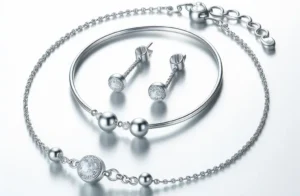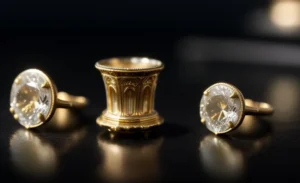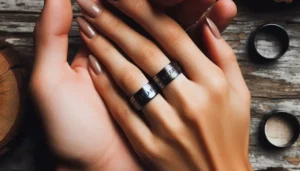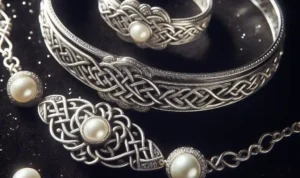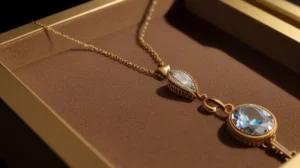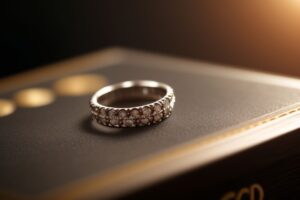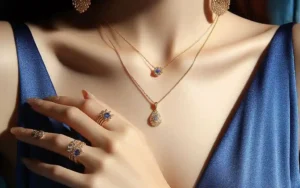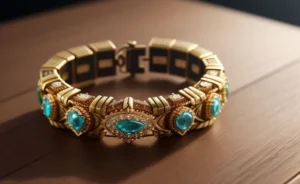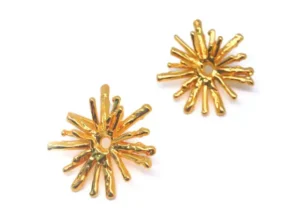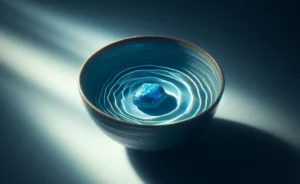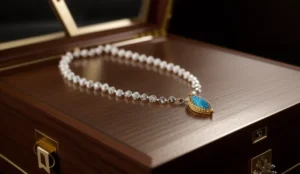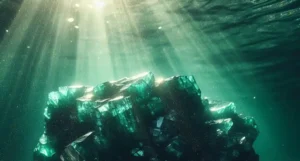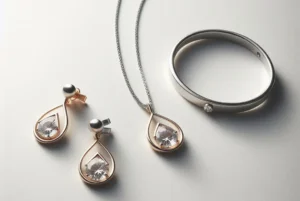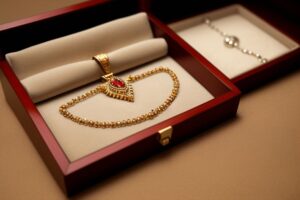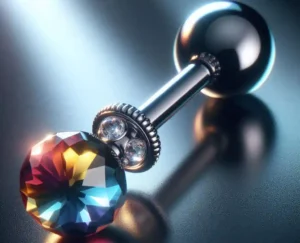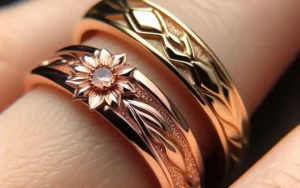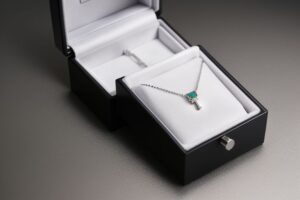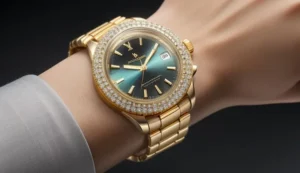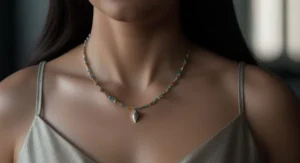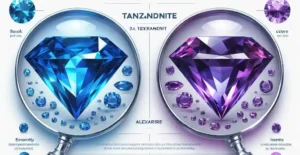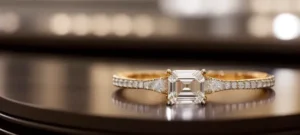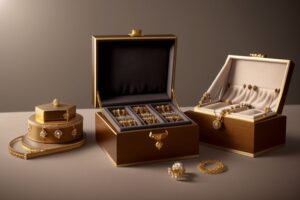How to Tell if Moldavite Is Real? Moldavite has recently surged in popularity among collectors and spiritual communities. Known for its unique green color and extraterrestrial origin, this rare gemstone has fascinated individuals with its beauty and metaphysical properties.
However, with rising demand comes the inevitable influx of counterfeits flooding the market. Discerning the authenticity of moldavite is crucial for anyone looking to invest in or work with this powerful crystal.
In this comprehensive guide, we will explore the various methods and tips for verifying the authenticity of moldavite.
How to Tell if Moldavite Is Real?
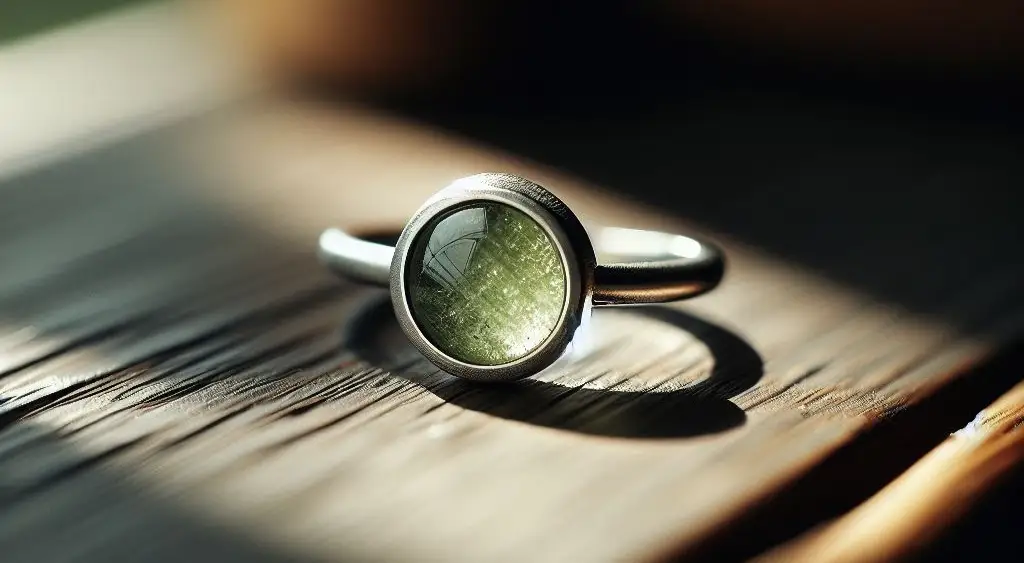
– Visual Inspection: Authentic moldavite has a distinctive rugged surface with sculpted, grooved textures. Its green color should display variation, ranging from pale to deep shades. Counterfeits often lack these subtleties, appearing overly uniform.
– Physical Feel: Genuine moldavite is lightweight and should feel warm, unlike common glass imitations that may feel colder and heavier.
– UV Light Test: Real moldavite will fluoresce with a chalky green color under UV light. This is a response not typically seen in fake pieces.
– Water Test: When gently placed in water, authentic moldavite may float or sink slowly due to its unique density and surface characteristics, differentiating it from faster-sinking glass counterfeits.
– Examine Bubbles and Inclusions: Natural moldavite contains irregularly shaped bubbles and inclusions. Fakes may have perfectly round bubbles, indicating a synthetic process.
– Consultation and Research: Engage with reputable dealers known for their transparency regarding the moldavite’s origin. Additionally, comparing the piece against trusted photographs and descriptions can help in making an informed judgment.
Understanding the Basic Characteristics of Genuine Moldavite
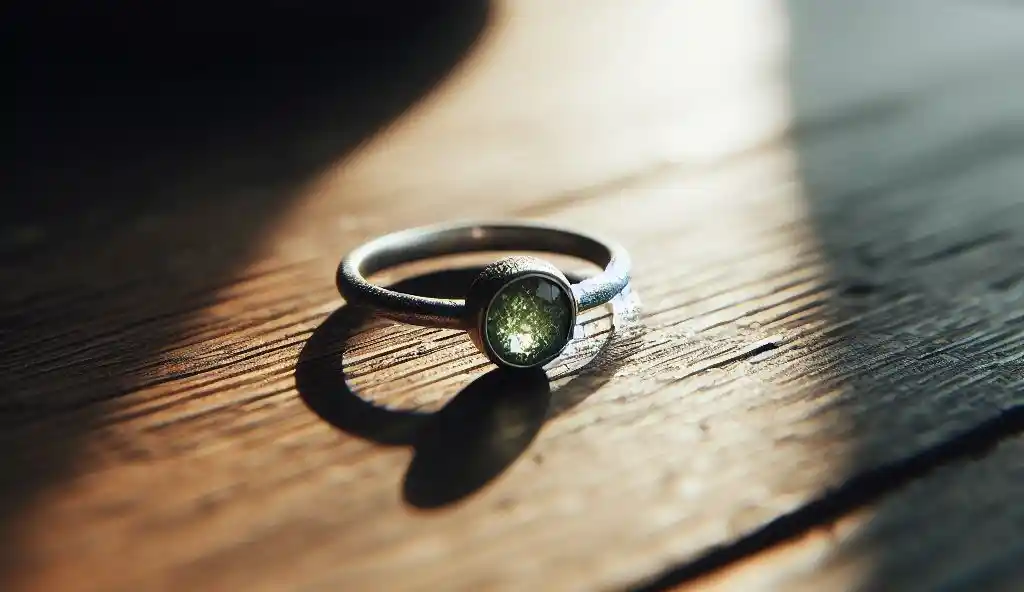
Genuine moldavite is a tektite, distinguished by its formation through the heat of a meteorite impact, which is a unique origin story among gemstones. This rare mineral is found only in the Czech Republic, making its geographic origin a key identifier.
Its colour palette varies from light olive to a deep bottle green, often with subtle variations within a single specimen. True moldavite possesses a distinct surface texture reminiscent of a rough, sculpted appearance created by natural erosion over millions of years.
This texture and the gemstone’s inherent irregularities set it apart from imitation products. Also, moldavite’s hardness on the Mohs scale is around 5.5, indicating a certain softness and susceptibility to scratches, unlike harder gemstones.
This combination of physical and visual traits provides the first clues in distinguishing authentic moldavite from its counterfeit counterparts, emphasizing the importance of a keen eye for detail and understanding its natural characteristics.
The Importance of Source Verification
Ensuring the moldavite you’re considering is authentic relies on confirming where it comes from. Authentic moldavite can only be sourced from the Czech Republic, due to its unique creation from a meteorite impact millennia ago.
Credible sellers should be able to confirm the Czech origin of their moldavite and provide specific details about its extraction location. This level of transparency from sellers is key to avoiding counterfeit pieces.
Engaging with vendors with a solid track record, supported by transparent communication about the origin of their moldavite, is essential.
Look for dealers forthcoming with information regarding the mining area and how their moldavite was acquired.
This diligence in source verification is fundamental in ensuring the piece in question is genuine, allowing collectors and enthusiasts to invest confidently.
Inspecting for Common Signs of Fake Moldavite
Counterfeit moldavite often gives itself away through characteristics that deviate from the natural gemstone’s appearance and texture. Many fakes are crafted from colored glass, which may exhibit a uniformity in color and a smoothness that genuine moldavite does not possess.
Unlike the real deal, with its rough, etched surface created by erosion over time, imitations may look overly perfect and lack the authentic stone’s organic irregularities.
Another telltale sign of a counterfeit is the presence of air bubbles; while genuine moldavite may contain bubbles, they are typically irregular in shape. In contrast, fake pieces might have perfectly round bubbles, indicating a synthetic origin.
These discrepancies are critical indicators for enthusiasts and collectors to spot faux moldavite, aiding in the discernment between authentic specimens and convincing counterfeits.
Utilizing Specific Tests to Authenticate Moldavite
There are hands-on methods you can apply to assess the legitimacy of your moldavite at home, short of professional gemological assessments.
A notable DIY test involves UV light: when exposed, real moldavite exhibits a distinct, chalky green fluorescence, a characteristic not commonly found in counterfeit materials.
Additionally, attempting the water test could yield insightful results; due to its peculiar density and interaction with water’s surface tension, genuine moldavite tends to float or descend very slowly when placed in water, unlike typical glass imitations which may sink more rapidly.
While not foolproof, these tests offer a practical starting point for enthusiasts to gauge the authenticity of their moldavite pieces, providing useful insights into the nature of the stone in question.
Understanding the Price as an Indicator of Authenticity
The cost of moldavite can offer vital clues about its genuineness. This rare gemstone’s price reflects its scarcity and the complex conditions under which it formed. Typically, authentic moldavite commands a higher price due to its limited availability and the increasing demand among collectors and enthusiasts.
When encountering moldavite at an unusually low price, it’s essential to approach cautiously. Bargain prices, particularly for substantial specimens, may indicate that the piece is not genuine.
It’s important to recognize that while not every affordable moldavite piece is counterfeit, the correlation between price and authenticity cannot be ignored.
Market research and comparison can aid in understanding the reasonable price range for authentic moldavite, enabling potential buyers to make informed decisions when assessing the value of a piece.
Acknowledging price as a crucial factor in the authenticity equation is key to navigating the complex moldavite market effectively.
The Role of Experience and Expert Evaluation
Navigating the world of moldavite can be daunting for newcomers. It’s where the wisdom of seasoned collectors and the precise judgment of professionals become indispensable.
Engaging with established moldavite enthusiasts offers a wealth of practical knowledge gained from years of collecting. These individuals can share insights on reputable sources and common pitfalls to avoid.
Furthermore, consulting with a certified gemologist or a jewelry store specializing in crystals provides an additional layer of verification. These experts can perform detailed assessments to confirm the authenticity of moldavite, utilizing tools and techniques beyond the reach of most hobbyists.
Their evaluations often include meticulous examination for specific characteristics known only to genuine specimens. Such expertise bolsters confidence in a piece’s authenticity and enriches one’s understanding of this extraordinary gemstone.
Engaging with these resources, whether through community forums or professional consultations, equips novice and experienced collectors with the necessary tools to make informed decisions in their pursuit of authentic moldavite.
The Significance of Inclusions and Bubbles in Genuine Moldavite
In genuine moldavite, the presence of inclusions and bubbles is not just common but can serve as a hallmark of authenticity. These features are a testament to moldavite’s natural formation process, resulting from the intense heat and pressure of a meteorite impact.
Unlike the symmetrical, perfectly round bubbles characteristic of synthetic glass, the bubbles in real moldavite exhibit irregular shapes and sizes.
Similarly, inclusions within genuine moldavite, such as strands of lechatelierite, underscore its extraterrestrial origin.
These inclusions are essentially remnants of melted quartz, swiftly cooled into their current form. Identifying these unique traits often requires a magnifying glass or jeweler’s loupe, as they may not be immediately visible to the naked eye.
Recognizing the distinct appearance of these inclusions and bubbles aids significantly in distinguishing authentic moldavite from clever imitations, underscoring the importance of a detailed examination for anyone looking to verify the authenticity of their moldavite specimen.
Leveraging Social Proof and Community Feedback
The experiences and opinions of fellow collectors and enthusiasts are invaluable assets in the quest for authentic moldavite. Before committing to a purchase, take the time to delve into the seller’s reputation.
This can be achieved by seeking out and reviewing feedback from previous customers, which is often readily available on online platforms, forums, and social media groups dedicated to gemstone collecting.
Positive reviews, particularly those that detail successful purchases of genuine moldavite, can signal a reliable source.
Engaging with the moldavite community through forums or social media can also provide insights into reputable sellers and common issues encountered by others in the market.
These platforms allow for exchanging experiences and recommendations, offering a broader perspective on the seller’s credibility.
Additionally, don’t hesitate to ask for referrals within these communities; often, the best advice comes from those who have navigated the market successfully.
Taking these steps not only aids in making a more informed decision but also contributes to a wider network of trust and verification within the moldavite collecting community.
The Evolution of Moldavite Fakes and the Importance of Staying Informed
As counterfeiters evolve their techniques for producing fake moldavite, it becomes increasingly vital for collectors and enthusiasts to remain vigilant and educated on these advancements.
The sophistication of imitation moldavite has reached a point where distinguishing between real and fake can challenge even the most experienced eyes.
To combat this, actively engaging in ongoing education is key. This includes participating in discussions on specialized online platforms, where members share updates on new types of fakes encountered in the market.
Additionally, attending gem and mineral shows offers the opportunity to see a variety of specimens up close, further honing one’s ability to spot inconsistencies and fakes.
Subscribing to newsletters or following trusted authorities in the moldavite community on social media can provide timely alerts about emerging counterfeit methods.
This proactive approach to staying informed not only aids in protecting one’s investment but also supports the broader community by raising awareness of counterfeit practices, ultimately making it harder for fake moldavite to circulate undetected.
Final Thoughts: Embracing Diligence and Patience in Your Search
Securing authentic moldavite is an endeavor that combines scrutiny with the willingness to delve into its fascinating world. The journey to distinguish real specimens from fakes hinges on a comprehensive approach that includes understanding its natural features, engaging with trusted sources, and leveraging community wisdom.
With counterfeiters becoming more sophisticated, staying informed through continuous learning and community engagement becomes crucial.
Always question deals that seem too good to be true, and prioritize purchasing from reputable sellers who can provide detailed information about the origin and characteristics of their moldavite.
Whether consulting experts for verification or participating in collector forums, every step taken enriches your knowledge and appreciation of this unique gemstone.
Pursuing genuine moldavite, with its captivating history and allure, is not just about acquiring a piece of the cosmos but also about embracing the patience and dedication required to ensure its authenticity.
FAQs
Q: Can moldavite lose its color or become less vibrant over time?
A: Authentic moldavite maintains its color throughout its lifespan. Any significant fading may suggest it’s not genuine or has been treated.
Q: How can I be sure a seller’s certification of authenticity is legitimate?
A: Always verify the credibility of the issuing authority. Reputable sellers should provide certifications from recognized gemological institutions.
Q: Is it possible to find large pieces of moldavite, and if so, how can I verify they are real?
A: Large specimens are extremely rare but do exist. Verification should follow the same guidelines outlined for any size, focusing on physical characteristics and professional assessment for added assurance.
Q: Can moldavite be artificially created or enhanced?
A: While synthetic glass resembling moldavite can be produced, it lacks genuine moldavite’s unique characteristics and formation story. True moldavite cannot be artificially created.
Q: How does the price of moldavite affect its authenticity?
A: Though price alone isn’t a definitive indicator, genuine moldavite typically carries a premium due to its rarity. Exceptionally low prices should raise questions about authenticity.

